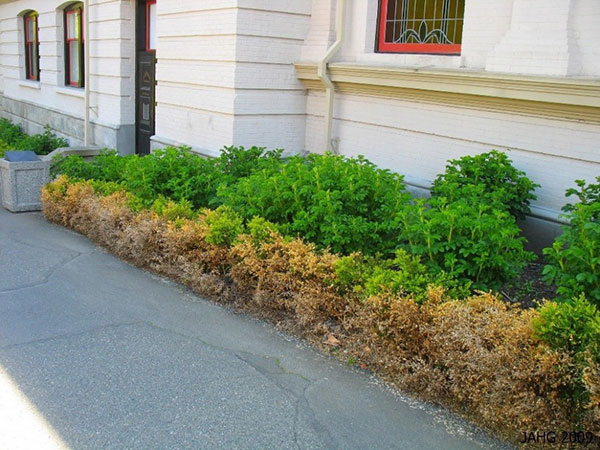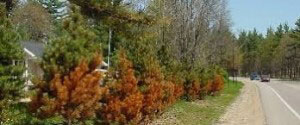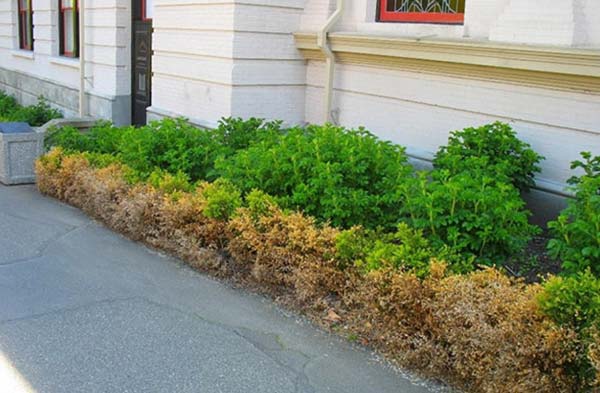Damaging Effects of Salt on Plants & Trees
 Most people are aware of the corrosive effects of salt on cars and trucks but may not be aware of the damage that winter salt from roads and walkways causes to trees and plants.
Most people are aware of the corrosive effects of salt on cars and trucks but may not be aware of the damage that winter salt from roads and walkways causes to trees and plants.
When salty road spray from passing vehicles and plows contacts trees and plants, the salt enters plants through the cells. Buds and twigs lose cold hardiness and are more likely to be killed by windy and freezing winter weather. Salt accumulation in the soil also causes injury when salt-laden snow is plowed off streets and sidewalks onto adjacent lawns and beds. Damage to plants from salt injury occurs throughout the next growing season, especially visible during the times of new growth and drought.
The symptoms of salt damage are smaller than usual leaves, tan-brown and yellow foliage, browning of leaf margins, twig dieback and premature autumn leaf color. Conifers and evergreens are very susceptible to salt injury showing browning of old and new needles. If salt is excessive in the soil, new leaves and needles may start to grow only to die and turn brown as the excessive salt accumulation shuts down water transport. In severe situations, salt damage could be lethal or show damage for several consecutive years.
-
- Rather than using salt, calcium, magnesium or potassium chlorides cause less damage to plants. These materials are more expensive but less is needed compared to salt. Sand and cinders can also be used.
- Calcium chloride is effective down to about 5 degrees (F). Rock salt is only effective down to about 15 degrees (F). Other products fall in between. If the temperature is below 5 degrees (F), use sand, not chemical products.
- Pre-applying materials before snow and ice occur is more effective and less material is needed. When you cannot pre-apply, shovel first and then apply materials to bare pavement.
- Apply lesser amounts of materials more frequently. Many people tend to apply too much material at once which contributes to plant damage.
- Avoid applications after March 1st because plants are coming out of dormancy and are very susceptible to injury.
- Screens may be placed around plants to reduce damage from salt spray.
- Snow with salt in it should not be piled on lawns, around plants or in places where salty water will drain into lawn areas and plant beds when it melts.
- When the snow with salt in it melts, it’s a good idea to flush the area around roots with fresh water.

- When new trees and shrubs are to be planted where exposure to salt is likely, select plants that are tolerant to salt spray injury. A google search on “salt tolerant plants” will reveal numerous choices.
Salt-tolerant deciduous trees include ash, birch, honeylocust, poplar, red oak, tamarack (larch), weeping willow and white oak. Salt-tolerant shrubs include, cotoneaster, hydrangea, mockorange, northern bayberry, pea shrub, potentilla, serviceberry, winterberry and most shrub roses.

